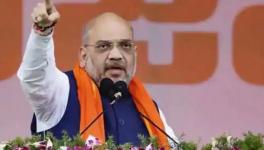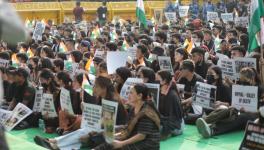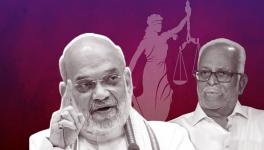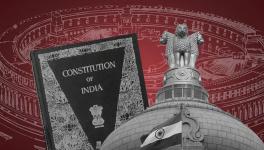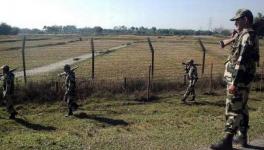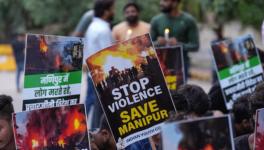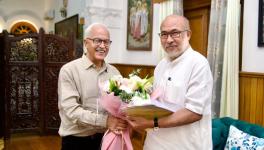Of Choice and Change: Burqas as Symbols of Protest
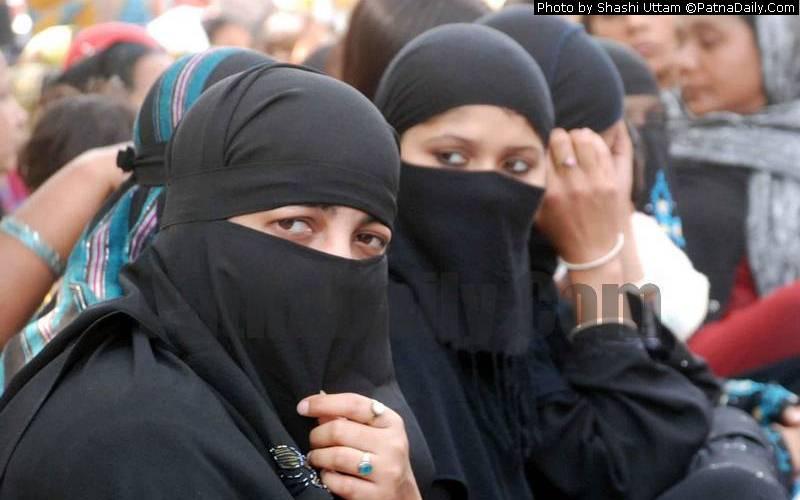
Representational Image. Image Courtesy: PatnaDaily
On January 25, the JD Women’s College in Patna withdrew a proposed ban on the burqa which it had imposed through a new dress code. The college said that the furore around it was the result of “confusion” and there had been no intention to harass Muslim students.
Donning a veil of some sort has been a practice all over the world for centuries. Yet, it is largely associated with Muslims today. Some Sikh and Hindu women, especially in Punjab, Haryana, Rajasthan and in the hills of Uttarakhand and Himachal Pradesh practice some form of purdah.
Very often, the media interprets this practice as orthodox and equates it with the Talibanisation of Muslim society. The truth is that the veil has been prevalent for hundreds of years before the formation of the Taliban in Afghanistan in September 1996.
In India, many young girls wear some sort of scarf to cover their head or both the head and face as a fashion statement. This practice reportedly began in Pune more than two decades ago and it can be said that it has nothing to do with religion.
Though wearing an abaya, a chaadar or a burqa is compulsory for all women in Saudi Arabia (of late there have been some relaxations) and in Taliban-controlled Afghanistan; it is Iran, which contributed immensely to make it as a symbol of protest.
Iran, unlike Afghanistan and Saudi Arabia, does not have a tribal society, and had shades of modern thought even during the reign of Raza Shah, before the revolution. More recently, women protested against the compulsory wearing of headscarves in Iran, and took them off in a bid to challenge orthodoxy. This brings us to the critical element of choice in the discussion about veils; an aspect which the media more often than not ignores. Protest, assertion, orthodoxy, identity, privacy and defiance: the veil has a multitude of meanings, each drawing meaning from its context.
In an interview with George Liston Seay for Dialogue, the Woodrow Wilson Center’s radio programme, Iranian author Haleh Esfandiari spoke of the circumstances in which the veil was banned during the Shah’s regime. She said that the Shah had long been pushing for women to discard the burqa. However, abolishing it had the same consequence as enforcing it, essentially taking away the right to choose. “When the veil was finally abolished officially, it was certainly a victory for women but a tragedy, too, because the right to choose was taken away from women, just as it was during the Islamic Republic when the veil was officially reintroduced in 1979,” said Esfandiari.
Once the movement against the Shah started generating momentum in 1977-’78, Iranian society started changing. Many among the youth started sporting beards, and women and girls, even the fashionable ones of Tehran, Isfahan, Shiraz, Ahwaz among other regions, started donning burqas. Lakhs of women, along with men, would take to streets in protest against the shah’s regime. By the time it was overthrown on Feb 11, 1979, the revolution had attracted global media attention.
At the time, participation of women in any popular movement was not so common, an exception being the women who took part in the opposition to United States imperialism in Vietnam and Cambodia during the 1960s and 1970s.
But in the Muslim world, one had never seen pictures of burqa-clad women, AK-47s in hand, fighting the invading Iraqi army in Khurramshahr, Qasr-e-Shirin or other bordering towns and cities of Iran during the war, in a movement which started on September 22, 1980 and continued for eight years. Women did not only assist men, but fully participated with them. The Iranian propaganda machinery fully exploited this scenario. Though that was not the era of the internet or private television channels in this part of the world, yet the Iranians, with the help of magazines, books and pamphlets, fully propagated the role women were playing.
Many young Iranian women going through university education in the Indian subcontinent and the West also wore burqas. This created curiosity in the minds of several young Muslim girls studying with them. This was an unconscious development and these young women felt that burqa is not a symbol of orthodoxy as the western press makes it out to be. The wave of Islamisation started spreading.
One of the more striking examples is from a fairly conservative Pakistan, where Oxford-educated politician and former Prime Minister, Benazir Bhutto, abandoned western tastes and opted for dupattas to cover her head. Gradually, this assertion of identity spread through to the West; the idea that the burqa was not as compulsory as projected to be.
Several years ago, when a debate over the burqa was raging closer to home, noted writer Sadia Dehlvi came to a television studio clad in one, when invited. The male anchor at the time was taken aback. Dehlvi opined she was against the manner in which the form of clothing is ridiculed and maligned. She added that the choice of one’s dress should be personal and that there should be no scope for criticising anyone on this count. She has also been critical of recent developments regarding the veil in Europe.
By the 1980s, Muslim society in India also changed. The enrolment of girls in schools and colleges increased. This phenomenon continued to grow and now, in several states, there are more Muslim girls in schools than boys. There is also a big jump in urbanisation and migration to other countries.
The IT revolution also gave a big boost to knowledge acquisition even for those who stay at home. It was much prevalent in the middle and lower-middle class of Muslim society, in which women predominantly don the burqa.
Ironically, or by design, this social change in Muslim society got little media attention. Now Muslim women are entering various professions. Instead of being objective in studying both the Hindu and Muslim right, liberals looked at the burqa or any form of hijab with scorn and suspicion. This is why media-persons and opinion-makers were surprised at the mature response of burqa-clad women from not just Shaheen Bagh, Mumbai or Kolkata, but also Firozabad in Uttar Pradesh and Gaya, Araria and Kishanganj in Bihar.
It is now close two months since women first took to streets in Shaheen Bagh on December 16, 2019. They have also turned burqas and head-scarves into symbols of protest. Many women, who do not usually don a burqa or chaadar are borrowing one from their friends or elderly relatives when they join the sit-ins that are taking place all over the country.
Interestingly, some Hindu women and girls in Shaheen Bagh joined the protest with their heads covered too. They were heard teasing Prime Minister Narendra Modi by asking him recognise them by their clothes. He probably could, since the kurtas he wears also trace their history to the Central Asian nomadic tunic.
One placard at Shaheen Bagh, notably, shows a woman wearing a hijab and a bindi; it asks the PM to ‘recognise her by her clothes’. One interpretation of such placards is that it is an assertion of a newfound political savvy. As reports have said, when Home Minister Amit Shah said the government would not budge an inch on the CAA, the women thundered: “We are not moving back a millimetre.”
The author is a freelance journalist. The views are personal.
Get the latest reports & analysis with people's perspective on Protests, movements & deep analytical videos, discussions of the current affairs in your Telegram app. Subscribe to NewsClick's Telegram channel & get Real-Time updates on stories, as they get published on our website.










